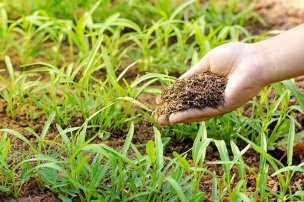
Lost When Choosing A Fertilizer? Here’s Where to Start
Here’s a situation many of us have been in: You’re choosing a fertilizer at the gardening store and are overwhelmed by all the labels in front of you. Figuring out which one to buy can be a difficult task because it’s hard to see what makes a fertilizer better than all the others. But there is a trick to make the process less like understanding a foreign language!
On the front of the fertilizer package, you’ll see three numbers separated out by dashes (X-X-X). Those numbers are the formulations of NPK. NPK is the short-hand term for nitrogen, phosphorous, and potassium. This formulation typically does not equal 100 because of the additional nutrients also added into the mix. Depending on what you’re looking for in a garden, this formula can be helpful in deciding which fertilizer to purchase.
The first number is the percentage of nitrogen. Nitrogen is important because it allows plants to produce more chlorophyll, and is beneficial because it allows plants to grow quicker. As a result, plants will grow taller and have a darker green color.
The second number is the percentage of phosphorous. Phosphorus is helpful for root development and increases flowering ability and bloom size. More phosphorous is generally helpful when you’re just starting to plant a garden.
The third number is the percentage of potassium. Potassium makes your garden healthier in many ways. For instance, it can guard against diseases, help in drought protection, and increase cold tolerance. It can also help improve root development and help the photosynthesis process. Choosing a fertilizer that is high in potassium can be helpful during the start of winter and spring when there are fluctuations in the weather.
As you become a more experienced gardener, you will be able to spot the signs if your plant needs a specific combination of nutrients. If your plants are lacking the adequate amount of nitrogen, they may start turning a light green or yellow. If the plant is lacking the proper amount of phosphorous, the plants will have purple foliage. This knowledge can enable you to pick the right choice of fertilizer for your plants.
Overall, when choosing a fertilizer, it’s important to know the right fit for where and what you are trying to grow. With the right fertilizer, you can make sure your plants are getting all the proper nutrients necessary for proper growth. This helps maintain the health and growth of your lawn and garden for seasons to come!
What kind of fertilizer are you using in your garden?


Sorry, the comment form is closed at this time.